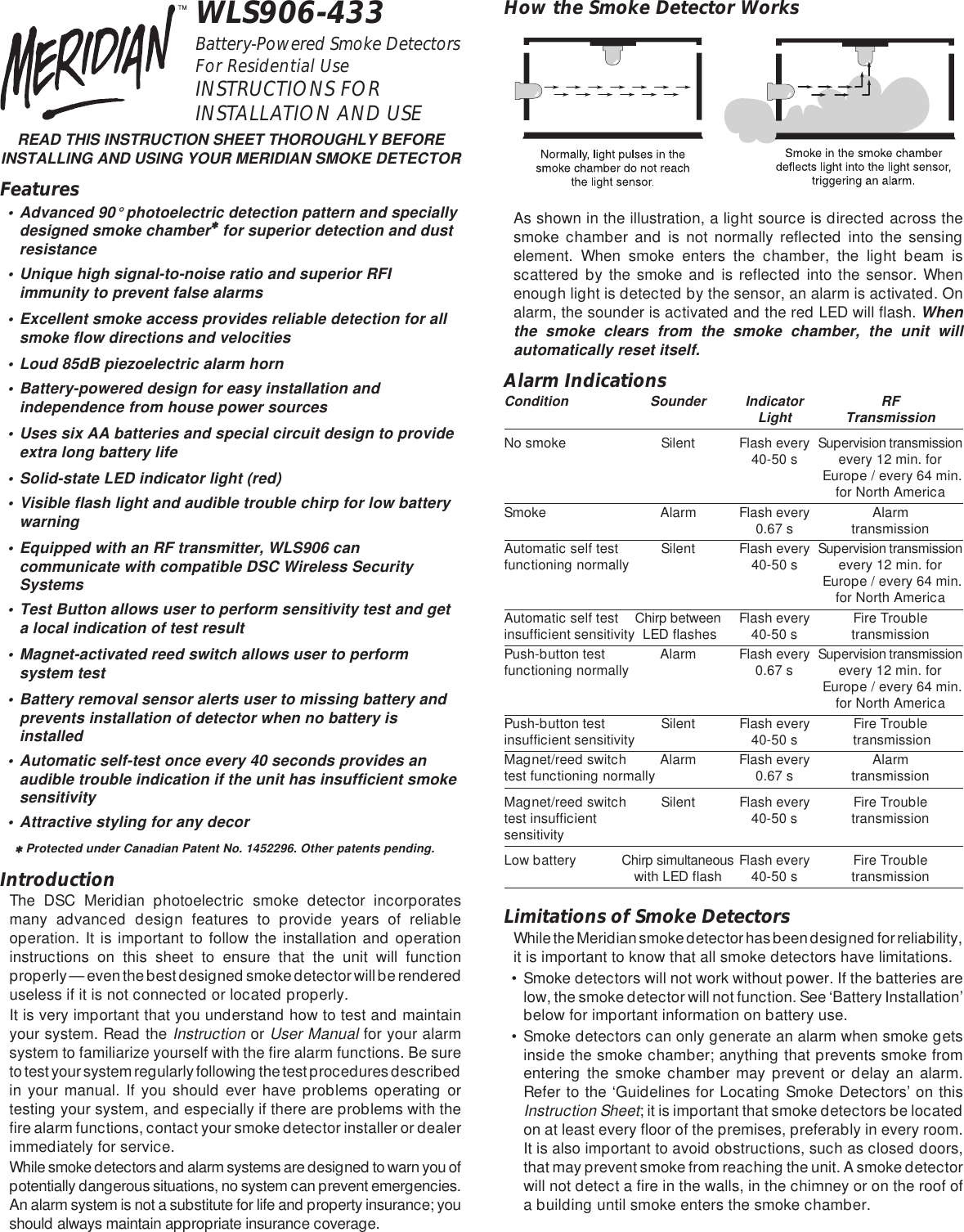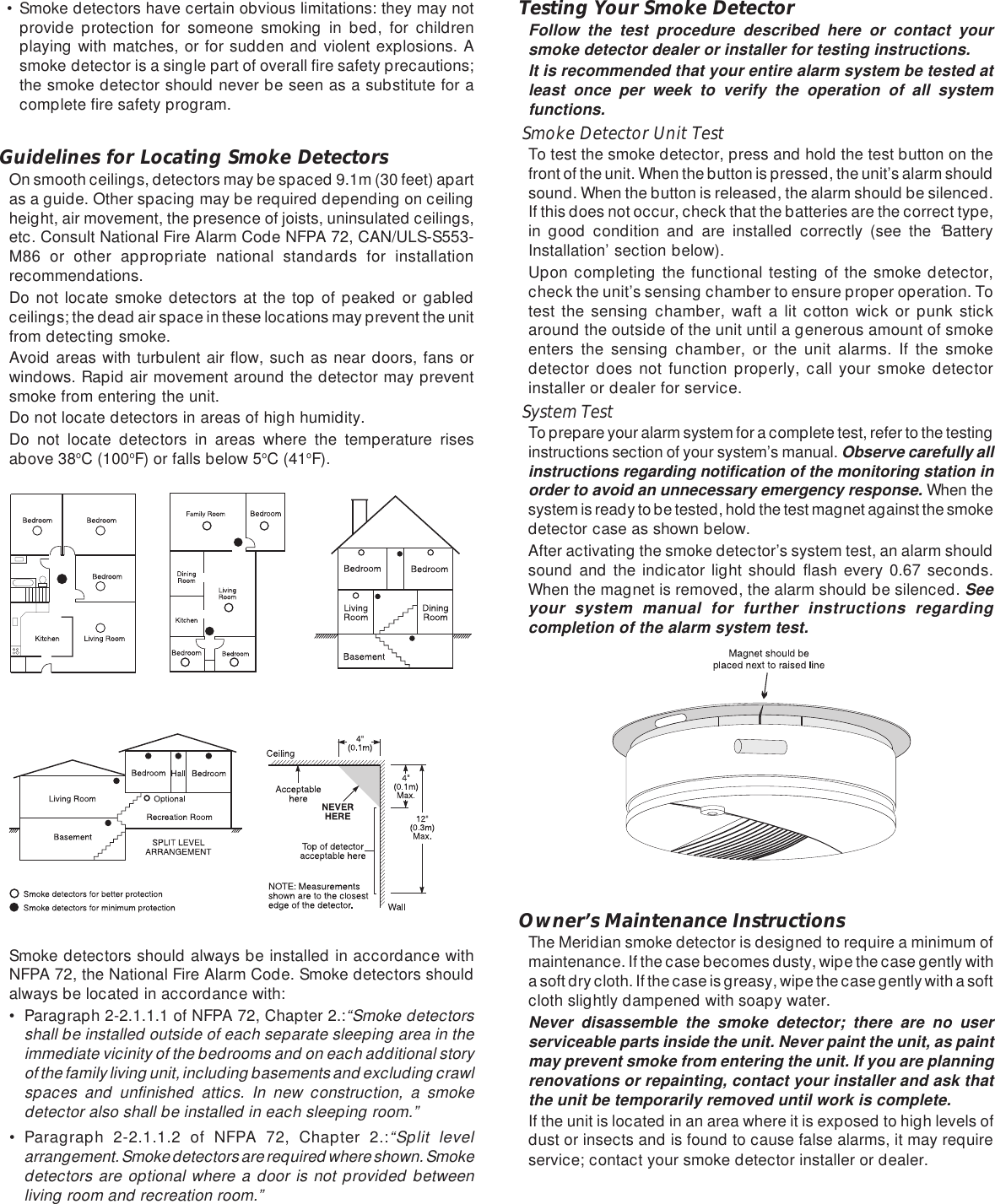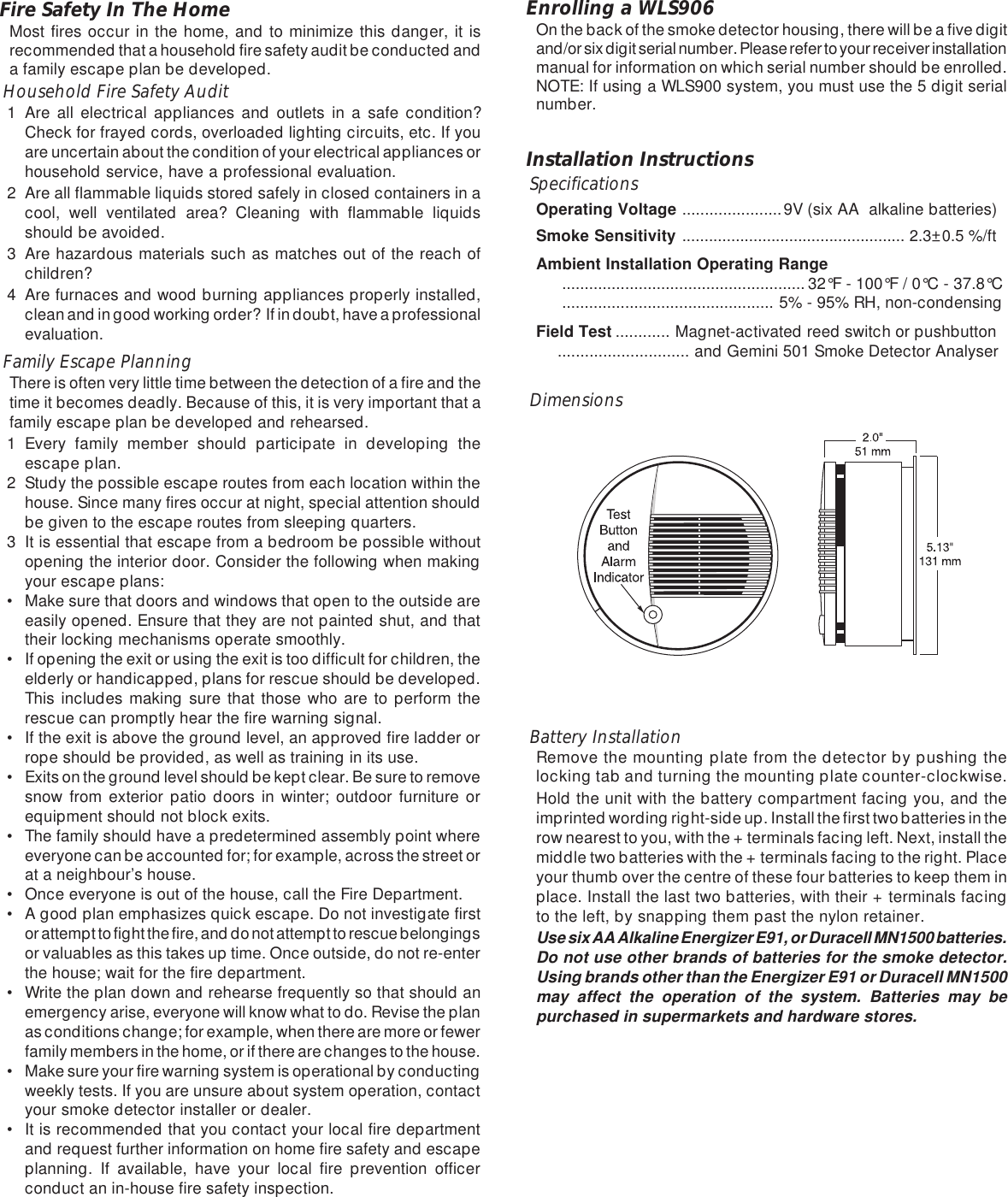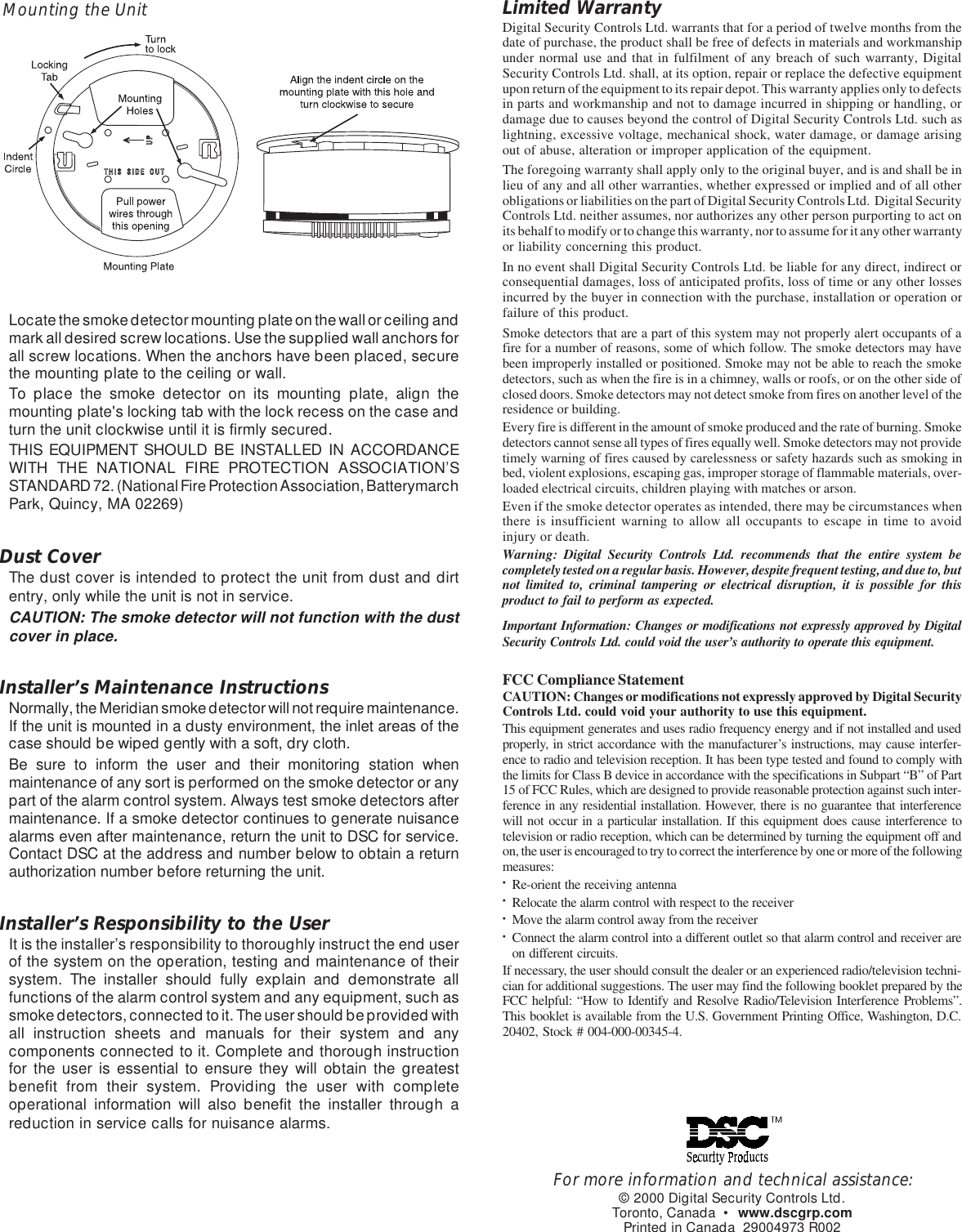Tyco Safety Canada 01LC906 WLS906-433, WLS906-433EU & WLS906-433NA SMOKE DETE User Manual wls906 433 inis eng 29004973 r002 P65
Digital Security Controls Ltd. WLS906-433, WLS906-433EU & WLS906-433NA SMOKE DETE wls906 433 inis eng 29004973 r002 P65
Installation manual



